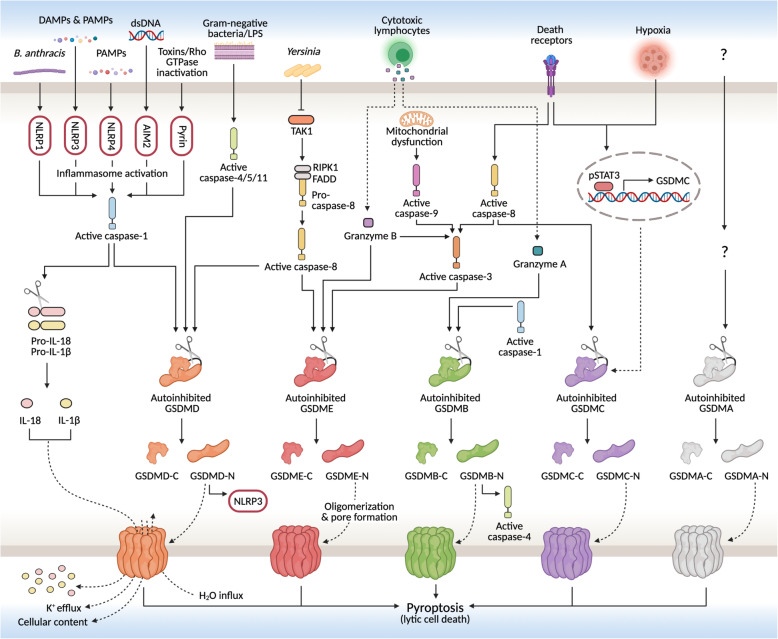Fig. 1.
Schematic of pyroptosis signaling pathways. The canonical inflammasome pathway to pyroptosis is induced by various stimuli and results in caspase-1 activation, while the non-canonical pathway is induced by LPS and results in caspase-4/5 activation. Both activated caspase-1 and caspase-4/5 cleave autoinhibited GSDMD at its linker region to free the N-terminal domain of GSDMD (GSDMD-N) from its repressor C-terminal domain (GSDMD-C). GSDMD-N then translocates to the plasma membrane and undergoes oligomerization and pore formation, which causes an increase in osmotic pressure and eventually cell lysis. Pore formation also facilitates the release of intracellular content and the inflammatory cytokines IL-18 and IL-1β following their activation by caspase-1. Through alternative pathways, GSDMD may also be cleaved by caspase-8, similar to GSDME, which can additionally be cleaved by caspase-3 and granzyme B. Aside, GSDMD-N and GSDMB-N can also respectively activate NLRP3 or caspase-4. In the other alternative pathways, GSDMB is cleaved by caspase-1 or granzyme A, while GSDMC is cleaved by caspase-8 and transcriptionally upregulated under hypoxia through pSTAT3 interaction with programmed death-ligand 1. The mechanisms of GSDMA-mediated pyroptosis have yet to be elucidated. AIM2, absent in melanoma 2; DAMPs, danger-associated molecular patterns; FADD, Fas-associated death domain protein; GSDMA/B/C/D/E, gasdermin A/B/C/D/E; IL, interleukin; LPS, lipopolysaccharides; NLRP1/3/4, NLR family pyrin domain-containing 1/3/4; PAMPs, pathogen-associated molecular patterns; RIPK1, receptor-interacting serine/threonine-protein kinase 1; pSTAT3, phospho-signal transducer and activator of transcription 3; TAK1 (also known MAP 3 K7), transforming growth factor beta-activated kinase 1

